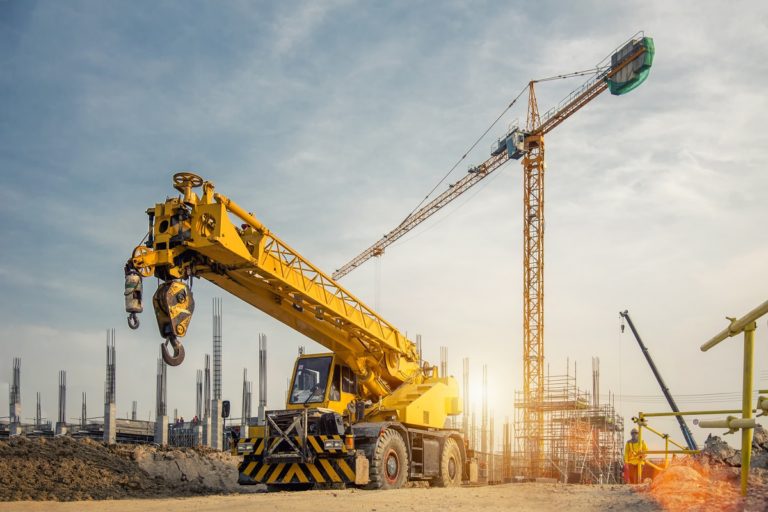Construction projects hardly take a single season to complete. It usually takes a full year. As such, the site will witness all the seasons pass, including the monsoon, which occurs in the summer months.
In tropical countries, the weather is even more unpredictable. It could rain in the middle of a heat wave, or even during the dry season. That’s why many construction projects in those places encounter climate-related delays.
But regardless of where your construction project is taking place, the weather remains a risk. The monsoon season is particularly bad because it could reverse your progress and make your business liable for the damages your project would cause.
Hence, if your construction project will inevitably become subject to the monsoon rains, here are the risks you should prepare for:
1. Building Materials and Debris Hurling in the Air
If a hurricane hits, the strong winds can send the building materials and debris flying at high speed. It may injure people, especially if the site is in a residential zone.
2. Construction Workers Sustaining Injuries
If the hurricane struck in the middle of a workday, your construction workers may risk losing their balance on a scaffolding, hoist, or any tall equipment. Your company would have to shoulder the costs of their treatment if they’re not insured. In addition, you may risk facing legal issues for violating the OSHA regulations. Even if there are no specific standards for working in the rain, federal labor law expects employers to keep their workers safe from hazards that can cause harm or death, such as a hurricane.
Considering what could be at stake, postpone your construction operations if you can’t provide adequate protection for your workers.

3. Construction Workers Experience Cold Stress
Besides bodily injuries, construction workers may also experience cold stress when it rains. Cold stress causes conditions related to low temperatures, such as hypothermia, frostbite, and trench foot. Though your workers won’t likely experience something that severe during a rainy day, cold stress isn’t limited to freezing temperatures. Anyone working outdoors may experience it when the temperature reaches 50° Fahrenheit.
Protect your construction workers from cold stress by providing them proper protective gear. The OSHA doesn’t require employers to pay for workers’ raincoats, but practice generosity nonetheless.
4. State Labor Law Variations
Some states have their own OSHA-approved programs, which differ from federal OSHA regulations. So before commencing a construction project in any of those states, do your research. Note that their programs may have more stringent regulations. For instance, in California and Minnesota, OSHA requires employers to buy raincoats for their workers.
5. Sediment and Erosion
Heavy rains may increase sediment on your site, then carry it around town via runoff. The runoff may then erode the soil, causing costly destruction to your soon-to-rise building.
Minimizing sediment and erosion risks is crucial to an effective stormwater pollution prevention plan (SWPPP). It will also reduce the environmental impact of your project.
Control sediment and erosion by limiting the areas you’d disturb. Refrain from touching natural vegetation areas if there’s no need. Leave the topsoil undisturbed as much as possible.
Divide your project into phases, and avoid breaking new ground until it’s absolutely necessary. Complete a phase before starting a new one, because it will also complete the erosion control of that area.
Dig ditches to prevent sediment runoff. It can channel the sediment to a natural sediment trap. Stabilize the soil next to reduce erosion risks. You can temporarily stabilize the soil through seeding, mulching, blanketing, or wool binding.
If you’re working on a sloped ground, use silt fencing or fiber rolls to minimize the effects of erosion. Silt fencing can also provide storm inlet protection, which keeps your site from flooding.
In addition, you can also use silt fencing to control your site’s perimeter. But note that a perimeter fence is only effective in keeping sediment at bay in small areas.
To ensure that you’re using effective measures, conduct regular site inspections. Visit the site after a rain, even light ones. Routine inspections ensure that your project is prepared for the worst monsoon rains and that you have effective systems in place. It also detects problems early, before it wreaks havoc.
Most importantly, stay updated with weather forecasts. Note the predicted wind speeds and analyze how they may affect your project. There might be no way to tell when a gust will occur, but if you monitor the wind speed diligently, you can protect your site ahead of time.
Know when to stop your operations as well. When the risks are simply too high, it’s better to stand back and wait for the storm to subside. It’s easier to start over with less damage than to conduct rescue missions.



